Swans (band)
| Swans | |
|---|---|
 Swans performing live in Warsaw in December 2010. From left to right: Christoph Hahn on lap steel, Michael Gira on guitar, Thor Harris on percussion, Chris Pravdica on bass guitar, and Norman Westberg on guitar. Phil Puleo is seated behind the drum kit. | |
| Background information | |
| Origin | New York City, U.S. |
| Genres | |
| Years active |
|
| Labels | |
| Associated acts | |
| Website |
younggodrecords |
| Members |
|
| Past members | See members section |
Swans (/swɒnz/) are an American experimental rock band formed in 1982 by singer, songwriter and multi-instrumentalist Michael Gira. One of few acts to emerge from the New York City-based no wave scene and stay intact into the next decade, Swans have become recognized for a unique, ever-changing sound which has contributed to the development of genres such as noise rock, post-punk, industrial and post-rock. Initially, their music was known for its sonic brutality and misanthropic lyrics. Following the addition of singer, songwriter and keyboardist Jarboe, who first appeared on the 1986 single "Time Is Money (Bastard)" and debuted as a songwriter on the 1987 album Children of God, Swans began to incorporate more melody and intricacy into their music. Jarboe remained the band's only constant member except Gira and semi-constant guitarist Norman Westberg until their dissolution in 1997.
Since 1990, all Swans records have been released through Gira's own label, Young God Records. In 2010, Gira re-formed the band without Jarboe, establishing a stable lineup of musicians which has toured worldwide and released several albums to critical acclaim.[1] This iteration of the group performed its last shows in November 2017, ending the tour in support of its final album The Glowing Man.[2] Afterwards, Gira plans to reinvent Swans "with a revolving cast of contributors".[2]
History
.jpg)
Early years (1982–1985)
Initial influences
Michael Gira has repeatedly stated he took the moniker Swans as it described the sound he wanted best. Gira's summation of the name follows along the lines of: "Swans are majestic, beautiful looking creatures. With really ugly temperaments."[3]
The earliest known lineup of Swans comprised Gira on bass guitar and vocals, Jonathan Kane on drums, Sue Hanel on guitar, Mojo on percussion and tape loops and either Thurston Moore, Dan Braun or Jon Tessler on the second bass guitar. Jon Tessler also played percussion and tape loops. Hanel's only recordings with the group are on the compilation Body to Body, Job to Job, but the ambiguous personnel credits do not make it clear on which songs she performed. Kane stated that "Sue was the most fearsome guitarist we'd ever heard in New York. She was unbelievable."[4]
Hanel did not stay long in the group, and by the time of their recording debut she had been replaced by Bob Pezzola. This lineup of the group also featured saxophonist Daniel Galli-Duani, who had previously played with Kane as the avant-garde duo Transmission. The debut EP, Swans, released on Labor, is markedly different from anything they would do later. The plodding tempos and distorted, detuned guitar work is reminiscent of such post-punk outfits as Joy Division. However, the minimal chord structures owe more to blues, while the jazz instrumentation and awkward time signatures are evidence of Swans' roots in the no wave scene of the late 1970s,[5][6] which had more or less collapsed by the release of 1984's Cop.
Early press comparisons
Kane compares Swans to blues icon Chester Burnett, a.k.a. Howlin' Wolf. Some similarities worth noting—the music of early Swans was often based on a single riff, played repeatedly to hypnotic effect. Some of Burnett's songs—especially the songs penned by Burnett himself—have a similar structure and quality. Their early music was typified by slow and grinding guitar noise, and pounding drums, punctuated by Gira's morbid and violent lyrics (inspired by Jean Genet and Marquis de Sade), usually barked or shouted. Critics have described Swans' early recordings as "aggressive beyond words".[7]
Their first full-length release, Filth (1983), featured driving, choppy rhythms and abrasive drums. The whole is reminiscent of earlier no wave bands, such as Mars, and the work of Swans' contemporaries, like Sonic Youth's Confusion Is Sex and Kill Yr Idols; but critic Ned Raggett contends that "early Swans really is like little else on the planet before or since".[8] Filth was the first album to feature guitarist Norman Westberg, who would play a vital role in much of Swans' music and would feature on every subsequent studio album apart from Love of Life.
Cop (1984) and the originally untitled Young God EP were both released in 1984 and re-released together on CD in 1992. Young God has been known by several names, usually by one of its two A-sides, such as "I Crawled" or, notoriously, as "Raping a Slave". This release is often confused with their self-titled debut. The music continues in the same vein as Filth, and is again vaguely reminiscent of heavy metal music played in extreme slow motion. Swans were, in this era, Gira on vocals, Westberg on guitar, Harry Crosby on bass guitar and Roli Mosimann on drums. Gira's vocals had changed slightly, becoming slowly more melodic, although the snarl still remained. Some of the songs on the EP, particularly "Young God" and "I Crawled", have an actual vocal melody, if rudimentary, hinting at the sounds of future releases. Young God is considered by many to be the best of their early releases for this reason.
Godflesh frontman Justin Broadrick shared this impression of the group:
| “ | The first Swans record I owned was Slave EP [Young God], and it absolutely blew me away... it was a sound that I always wanted to hear, just the bleakest and blackest. The minimalist approach of the music, that was what really influenced me. It was non-genre-specific, with a total lack of baggage... purely abstract, surreal, and violent. It communicated to me in a very special way, and taught me that heavy metal could be stripped of everything and reduced to its most primal form. None of the traditional genre bullshit, you know? Really changed my perspective on music at the time. Joy Division, Killing Joke—Swans took the blueprint from these bands and just pushed it way, way further, more outside of the whole rock thing generally, and paved the way for me.[9] | ” |
Live shows
One of the trademarks of Swans' early period was playing at painfully loud volumes during concerts, often leading to police stopping shows. Gira was also notably confrontational with the audience, such as stepping on people's fingers resting on the stage, pulling people's hair and, notably, physically assaulting anyone caught in the crowd headbanging; something Gira detested.[10] This lent a reputation to the name Swans which was one of the contributing factors in Gira's retirement of the band in 1997.[11]
Since Swans' re-formation, Gira has made a point of maintaining the intensity of their live show, stating that it is at once "soul-uplifting and body-destroying". He has also sometimes turned off the air conditioning before Swans performed and compared the experience to a Native American sweat lodge.[12]
Mid-period (1986–1988)
1986's Greed saw a new addition to the group with vocalist/keyboardist Jarboe joining the band.[lower-alpha 1] Her presence began a slow thawing in the overt brutality and energy of Swans' early work.
Greed also marked the introduction of bassist Algis Kizys as a long-time, near-constant member. The album is not as brutal or noisy as their previous releases but is still an extremely ominous and dark record. This was followed by its "twin" album, Holy Money, the first to feature Jarboe on lead vocals. Holy Money was also the first album by Swans to incorporate acoustic elements, in particular, the eight-minute dirge "Another You", which starts with a bluesy harmonica introduction. It also marks the introduction of religious themes in Swans records with the sacrificial ode "A Hanging", complete with gospel-like backing vocals from Jarboe.
Children of God (1987) further expanded Jarboe's role, acting as a foil to Michael Gira's tales of suffering, torture and humiliation. The stories portrayed here, however, are ever the more unusual, given their juxtaposition—and admixture—with religious imagery. The intention was neither to mock nor embrace religion, but experiment with the power inherent in its messages and the hypocrisy of many of its leaders.[13]
Some songs, such as "Beautiful Child", retain the vocal style of earlier days, but many are quite tame. The almost baroque "In My Garden", for example, added an extra dimension with piano (used before on "Fool" and "Sealed in Skin" to far grimmer effect) and acoustic guitar. In between the two poles, there are pieces like "Sex, God, Sex" (heavy metal-like bass riffs with blues and gospel-inspired singing), "Blood and Honey" (a murder ballad with early post-rock tendencies) and "Blind Love" (a lengthy song, alternating between intoned vocals and violent instrumental passages). Gira considers this to be the band's major turning point.
Later years (1988–1997)
After the Children of God album, Gira professed himself tired with the band's fearsome reputation for noise, feeling that their audience now had expectations that he had no intention of fulfilling. He made a conscious decision to tone down the band's sound, introducing more acoustic elements and increasingly emphasizing Jarboe as a singer. The first results of this shift in direction were the two records recorded by Gira and Jarboe under the names Skin (in Europe) and World of Skin (in the US). The first, Blood, Women, Roses, featured Jarboe on lead vocals, and the second, Shame, Humility, Revenge, featured Gira on lead vocals. Both were recorded together in 1987, although Shame, Humility, Revenge was not released until 1988. These albums are full of slow, ethereal, melancholy, dirge-like songs, sounding like stripped down acoustic versions of the Children of God songs.
The band continued this transformation with an unexpected cover of Joy Division's "Love Will Tear Us Apart", which was released as a single in 1988 on Product Inc. in a confusing array of 7" and 12" inch formats. Both Gira and Jarboe sang lead vocals on different versions of the song. In later years Gira dismissed this release as a mistake, and for a long time refused to reissue his own vocal version, although Jarboe's version was re-released much sooner. However their version of the song was a hit on US college radio in 1988, which led to the group being offered a major label deal at Uni/MCA. "I'd worked so hard all my life", said Gira. "At 15, I was digging ditches in the desert in Israel, and I put myself through college painting houses. I never saw any money from any of our records. So by the time I finally got that carrot dangled in front of me, it was like, 'at last, I can make a living at what I love to do.'"[14]
This single was followed by The Burning World (1989), Swans' first and only major label album. Released on Uni/MCA Records, the record was produced by Bill Laswell and expanded the acoustic palette introduced on Greed and Children of God. For this album, the core line-up of Michael Gira, Jarboe and Westberg was augmented by session musicians, and the distinctive heavy guitar element of their earlier work was toned down significantly in favor of folk and world music elements. Though Swans would later explore more acoustic music with similar moods, Gira has stated that, while he admires much of Laswell's work, his efforts with Swans were simply a mismatch. The album reportedly sold 5000 copies in the UK, one of the lowest numbers in the history of MCA Records, and was soon deleted from MCA's catalogue.[14]
The Burning World was the first Swans album to feature more conventional pop melodies. Gira's lyrics still favored themes of depression, death, greed and despair, but were actually sung, rather than the chanting or shouting typical of earlier material. They even covered Steve Winwood's popular Blind Faith hit "Can't Find My Way Home", one of two singles from the LP.
In 1990, Gira and Jarboe released the third and final World of Skin album, Ten Songs for Another World. It was less successful than the previous two Skin albums.
Gira's disillusionment with their Uni/MCA exploits led to White Light from the Mouth of Infinity (1991), a successful blending of earlier hard rock and later pop styles. Produced by Gira, the album blended acoustic rock, blues and hypnotic guitar noise successfully, resulting in an album more complex than anything they had released in the past. This album was followed by Love of Life (recorded by Martin Bisi in 1992), the EP single Love of Life/Amnesia, taking the group even farther into experimentation, and then The Great Annihilator (1995), considered to be one of the band's most accessible releases, possibly through being their most straightforward. The songwriting style and musical approach, however, would take a more unusual turn the following year.
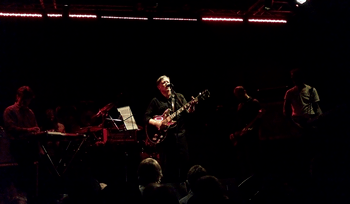
Demise
With other projects occupying his time, Gira decided to end the group with one last album and a world tour. Soundtracks for the Blind (1996) was the result: a mammoth two-disc album comprising Jarboe-supplied field recordings, experimental music, dark ambient soundscapes, post-industrial epics, post rock suites and acoustic guitar. It is one of the most highly regarded albums of their career. Swans Are Dead (1998) brings together live recordings from their 1995 and 1997 tours, documenting the energy and stage presence of Michael Gira and Jarboe. In an interview, Gira revealed that there is more live material that may be released in the future. He described these unreleased recordings as "fairly spectacular".[15]
Post-breakup and re-formation (1997–present)
After dissolving Swans, Gira formed Angels of Light, continued his work with Young God Records and Jarboe continued her solo work.
In January 2010, Swans' re-formation was heralded with a new song posted on the Young God Records' MySpace, and officially confirmed by a post on the Young God Records Facebook and MySpace accounts.[16] Gira decided to bring back Swans during an Angels of Light show five years prior. In the middle of performing the song The Provider onstage utilizing "large chords that were very sustained and swaying, in this sort of slave-ship rhythm," he felt "a nascent urge right then to re-form or reinvigorate Swans because I remembered how elevating and intense that experience was".[17] To help raise money for the upcoming new Swans album, Gira released a new solo album, I Am Not Insane, via his Young God Records website.[18] LAS Magazine posted an article entitled "Kickstart My Art" on alternative financing in "a cash-strapped music industry, unable to rely on record label financing, [that] is positioning its own quid pro quo: fan dollars to fund projects in exchange for exclusive material and a sense of involvement" that cites Swans selling out of the 1,000 signed and numbered copies of I Am Not Insane as an example of reverse financing where proceeds from one project are rolled over to finance the next.[19]

Swans then went on a series of U.S. and European tour dates,[20] and headlined the Supersonic Festival in Birmingham, England in October 2010. The first post-reformation Swans album, My Father Will Guide Me Up a Rope to the Sky, was released on September 23, 2010, and the band simultaneously embarked on an eighteen-month world tour.[17] The band were chosen by Portishead to perform at the All Tomorrow's Parties I'll Be Your Mirror festivals that Portishead curated in July 2011 at London's Alexandra Palace, and, in September 2011, in Asbury Park, New Jersey.
In 2012 Swans released the live album We Rose from Your Bed with the Sun in Our Head, featuring material culled from their 2010–2011 tour, in support of production and recording costs for their forthcoming record, The Seer.[21] Initially released as a limited handmade edition of 1000 copies, We Rose... was re-released in May 2012 as a deluxe digipak.[22] On July 15, 2013, Gira announced a new, handmade live album in the vein of I Am Not Insane and We Rose..., titled Not Here / Not Now. The album was announced for sale on October 14, with the proceeds helping to fund the recording of the new Swans studio album with John Congleton, announced in 2014 as To Be Kind.[23][24]
In 2014 the band announced that it signed with Mute Records for the world outside North America and that the band would be touring. That same year, in November, the band curated a three-day program at Le Guess Who? in Utrecht, The Netherlands, including Wire, Silver Apples, Ben Frost, Prurient and Words To The Blind, a project by Savages together with Japanese band Bo Ningen.[25]
In 2014 both The Seer and To Be Kind were ranked on Pitchfork Media's "Top 100 Albums of the Decade So Far 2010-2014." The Seer was ranked 17 and To Be Kind was ranked 85.[26]
The band announced on July 22, 2015 that they would be recording their fourteenth studio album in September 2015, following a fundraiser album entitled The Gate,[27] as with the three previous post-reunion studio albums.[28] On April 5, 2016, the band announced The Glowing Man and shared a two-minute excerpt of the twenty-nine minute title track. The album was released on June 17, 2016 on Young God Records and Mute Records,[29] and is to be the final Swans album released under a mostly homogeneous lineup, although Gira will continue to release music with "a revolving cast" of musicians.[27][30]
This final incarnation of the band announced for immediate release a live album, Deliquescence, on May 17. The album, limited to 3,000 CD-only copies, contains three tracks that have previously only been played live.[31] Gira has announced a brief tour of new SWANS material playing along the West Coast, commencing September 27 accompanied by longtime Swans guitarist Norman Westberg with recording to commence around February-March of 2019.[32]
Musical style and legacy
.jpg)
Swans' music has transformed greatly over the decades, but is typically dark[33][34] and "apocalyptic",[35] often focusing on themes of power, religion, sex and death,[36] and has been most generally associated with experimental rock.[37][38] According to Spin, the band demonstrates "unparalleled ability to translate the absurd violence of the human condition into music that’s as intoxicating as it is intense."[39] Swans' early work, rooted in the New York City-based no wave movement which was fading out by the time of their formation in 1982,[40] is extremely aggressive, characterized by Michael Gira as "stripping down the essential elements of what we consider to be rock music".[41] The Guardian described it as "a cacophonous rhythmic throb which drew on post punk, industrial, doom metal, NYC avant minimalism and the blues; a sound which was matched by Gira's often nihilistic, anti-natalist and existential lyrical concerns ... delivered in a stentorian and messianic manner."[42] It was an important contribution to both industrial music[43] and noise rock[44] and influenced the emergence of grindcore[45] (inspiring also the use of "grind" in musical context)[46] and sludge metal.[47] Later in the 1980s, Swans' music began to incorporate more melodic and intricate elements, especially since Jarboe's debut as a songwriter on 1987's Children of God.[48] While generally maintaining much dissonance, the band's subsequent work further ventured into genres such as post-punk,[49] gothic rock,[33] neofolk,[50] psychedelic rock[36] and art rock.[35] Their final album before breaking up, 1996's Soundtracks for the Blind, is a double album which emphasizes atmosphere, a contribution to the post-rock,[33][36] drone[51] and dark ambient[51] genres. Since re-forming in 2010, Swans have continued to be associated with post-rock[49][34] and drone music[38] as well as noise rock.[48] Their last three double albums, which have brought them widespread critical acclaim, often feature long songs that develop complex soundscapes.[52]
Swans have influenced a variety of experimental rock and extreme metal bands, such as Napalm Death,[53] Neurosis,[54] Godflesh,[55] My Dying Bride,[56] Tool,[57] Low,[54] Godspeed You! Black Emperor,[54] Weakling,[58] Khanate,[59] and Liturgy.[60]
Discography
Studio albums
- Filth (1983)
- Cop (1984)
- Greed (1986)
- Holy Money (1986)
- Children of God (1987)
- The Burning World (1989)
- White Light from the Mouth of Infinity (1991)
- Love of Life (1992)
- The Great Annihilator (1995)
- Soundtracks for the Blind (1996)
- My Father Will Guide Me up a Rope to the Sky (2010)
- The Seer (2012)
- To Be Kind (2014)
- The Glowing Man (2016)
Members
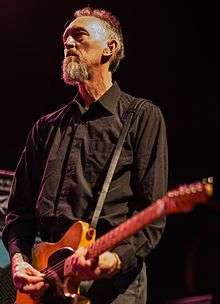
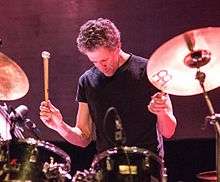
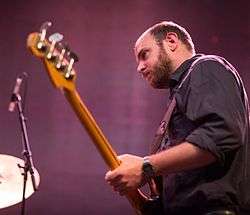
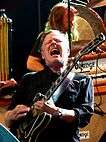

Current
- Michael Gira – guitar, vocals (1982–1997, 2010–present)
- Norman Westberg – guitar (1983–1995, 2010–present)
- Christoph Hahn – guitar, lap steel guitar (1988–1991, 2010–present)
- Phil Puleo – drums, percussion, dulcimer (1995–1997, 2010–present)
- Christopher Pravdica – bass guitar (2010–present)
- Paul Wallfisch – keyboards (2016–present)
Former
- Dan Braun – bass guitar (1982)
- Bill Bronson – bass guitar (1995–1997)
- Harry Crosby – bass guitar (1983–1984)
- Toby Dammit – drums (1995–1996)
- Daniel Galli-Duani – saxophone (1982)
- Joe Goldring – bass guitar (1995–1997)
- Ronaldo Gonzalez – drums (1986–1987)
- Sue Hanel – guitar (1982)
- Thor Harris – drums, percussion, vibraphone, hammered dulcimer, keyboards (2010–2016)
- Jarboe – keyboards, vocals, piano (1984–1997, 2012)
- Jonathan Kane – drums (1982–1983)
- Algis Kizys – bass guitar (1986–1995)
- Sami Kumpulainen – bass guitar (1988)
- Mojo – percussion, tape loops (1982)
- Thurston Moore – bass guitar (1982)
- Virgil Moorefield – drums (1989)
- Roli Mosimann – drums (1983–1984)
- Ivan Nahem – drums (1982, 1986)
- Ted Parsons – drums (1985–1987)
- Bob Pezzola – drums (1982–1983)
- Bill Rieflin – drums, additional instruments (1995–1996; guest 2010–2014)
- Vinnie Signorelli – drums (1991–1992)
- Clint Steele – guitar (1990–1997)
- Jon Tessler – bass guitar, percussion, tape loops (1982)
- Jenny Wade – bass guitar (1991)
Timeline
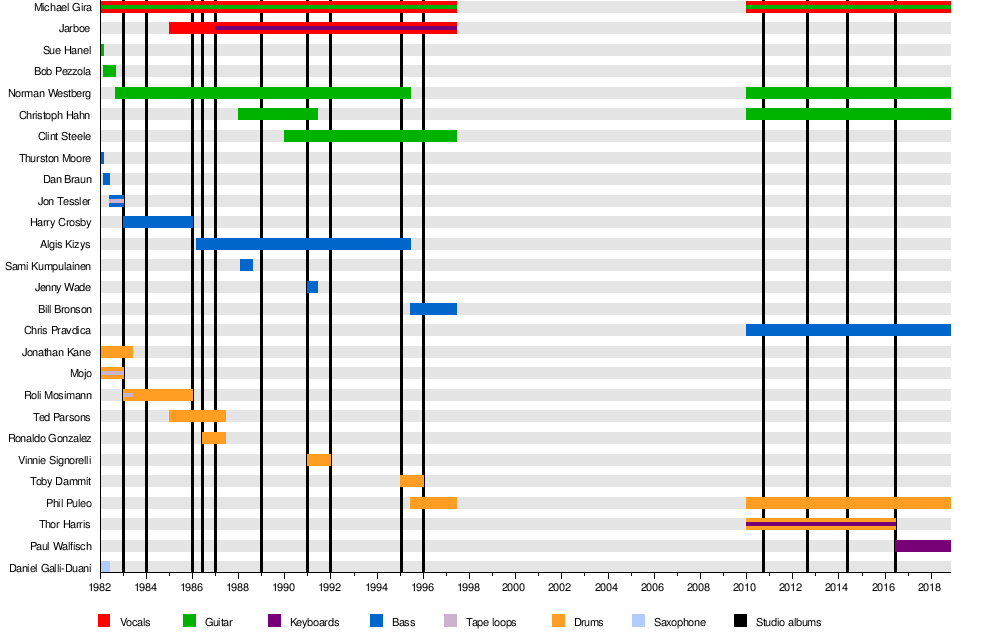
Notes
- ↑ Jarboe's first official recording with the band was on the Time is Money (Bastard) 12-inch, credited simply with "scream" (specifically at the start of the title track). By the time the track was recorded in the summer of 1985, she had already been in the band for about a month. Her first released tracks as lead vocalist and keyboardist for the band were on "You Need Me" on Holy Money and "Blackmail", a B-side from the A Screw 12". They both appear on the original CD version of Holy Money and the Greed/Holy Money compilation, while a minimal version of the latter appears on Children of God.
References
- ↑ "Metacritic Entries". Metacritic. Retrieved September 9, 2017.
- 1 2 "Final shows". Facebook post. September 7, 2017. Retrieved September 9, 2017.
- ↑ "Interview with Michael Gira from Swans". Flowers in a Gun. Retrieved May 5, 2015.
- ↑ Carden, Andrew (January 3, 2002). "Jonathan Kane and Swans". Mojo. Archived from the original on February 12, 2011. Retrieved February 20, 2013.
- ↑ Culkin, Jessamy (January 28, 2008). "Nobody Knows No Wave – Telegraph". telegraph.co.uk. Retrieved February 20, 2013.
- ↑ Browne, David (June 2, 2009). Goodbye 20th Century: A Biography of Sonic Youth. Da Capo Press. ISBN 0306816032.
- ↑ Raggett, Ned. "Greed – Swans : Songs, Reviews, Credits, Awards : AllMusic". AllMusic. Retrieved February 20, 2013.
- ↑ Raggett, Ned. "Filth – Swans : Songs, Reviews, Credits, Awards : AllMusic". AllMusic. Retrieved February 20, 2013.
- ↑ Ruffin, Josh (23 October 2007). "Justin Broadrick: Existing through risk". Metrospirit.com. Archived from the original on 10 February 2009. Retrieved 19 September 2008.
- ↑ Moynihan, Michael (1996). "Seconds interview". Seconds. Archived from the original on June 2, 2015. Retrieved February 20, 2013.
- ↑ Mamone, Jordon N. (May 1997). "The Final Sacrifice". CMJ. Archived from the original on November 28, 2012. Retrieved February 20, 2013.
- ↑ "Michael Gira - Crasier Frane". crasierfrane.com. October 20, 2010. Archived from the original on January 10, 2011. Retrieved February 20, 2013.
- ↑ "Swans". webinfo.co.uk. Archived from the original on March 4, 2003. Retrieved February 20, 2013.
- 1 2 Perry, Andrew (March 2011). "Swans". Mojo (208): 56.
- ↑ Gilbert, Tom (October 12, 2007). "soundsect.com : Feature". soundsect.com. Archived from the original on July 16, 2011. Retrieved February 20, 2013.
- ↑ "Facebook: Coming Soon New Swans Album and Tour". Facebook.com. Retrieved November 1, 2010.
- 1 2 Frere-Jones, Sasha (November 1, 2010). "Swans Way". The New Yorker. Retrieved January 8, 2017.
- ↑ "Coming Soon, New Swans Album and Tour(s)". Facebook. January 9, 2010. Retrieved February 20, 2013.
- ↑ "LAS Magazine". lostatsea.net. Retrieved February 20, 2013.
- ↑ Winistorfer, Andrew (May 11, 2010). "Reunited Swans Announce Fall Tour". prefixmag.com. Retrieved February 20, 2013.
- ↑ "Swans – We Rose from Your Bed with the Sun in Our Head (Handmade Live 2CD) Sold Out! – Swans". younggodrecords.com. Retrieved February 20, 2013.
- ↑ "Swans: We Rose from Your Bed with the Sun in Our Head 2xDigipack CD – Swans". younggodrecords.com. Archived from the original on January 15, 2013. Retrieved February 20, 2013.
- ↑ "Swans - title of new swans live cd/dvd will be: NOT... | Facebook". facebook.com. Retrieved July 12, 2014.
- ↑ "Swans announce plans for new album | Consequence of Sound". consequenceofsound.net. Retrieved July 12, 2014.
- ↑ "Le Guess Who? Festival 2014 official website". Archived from the original on June 17, 2015.
- ↑ "The Top 100 Albums of the Decade So Far; Pitchfork Media". pitchfork.com. Retrieved March 3, 2017.
- 1 2 "Swans - Just got home comatose after finishing up the... - Facebook".
- ↑ "Swans - These are the remaining Swans shows for 2015. In... - Facebook".
- ↑ Camp, Zoe (April 5, 2016). "Swans Announce New Album The Glowing Man, Share Title Track: Listen". Pitchfork Media. Retrieved April 5, 2016.
- ↑ "The Glowing Man". Retrieved April 27, 2017.
- ↑ "DELIQUESCENCE (Ltd. 2CD Live Recording)". YOUNG GOD RECORDS. Retrieved May 17, 2017.
- ↑ https://younggodrecords.com/blogs/news/m-gira-solo-tour-usa-and-more
- 1 2 3 Terich, Jeff. "Beginner's Guide: Swans". Treblezine. Retrieved March 7, 2017.
- 1 2 "Staff Pick: Swans' grueling post-rock will send you reeling". Columbus Alive. July 17, 2013. Retrieved November 17, 2016.
- 1 2 Gittins, Ian (April 5, 2013). "Swans – review". The Guardian. Retrieved March 7, 2017.
- 1 2 3 Lariviere, Aaron (November 9, 2012). "Swans Albums From Worst To Best". Stereogum. Retrieved March 7, 2017.
- ↑ "20 Rock Albums Turning 20 in 2016". Rolling Stone. June 16, 2016. Retrieved February 14, 2017.
- 1 2 Hamad, Michael (June 26, 2014). "Michael Gira Explains Why Drones Are Central To The Sound Of Swans". Hartford Courant. Retrieved March 7, 2017.
- ↑ Camp, Zoe (June 21, 2016). "Review: Swans' Actual Swan Song Is a Cloud of Unknowing on 'The Glowing Man'". Spin. Retrieved March 20, 2017.
- ↑ Calvert, John (March 10, 2014). "A Beginner's Guide to No Wave, New York's middle finger to the world". FACT Magazine. Retrieved February 15, 2017.
- ↑ "Swans : in depth interview with Michael Gira". Louder Than War. February 10, 2013. Retrieved March 7, 2017.
- ↑ Doran, John (December 4, 2015). "Enduring Love: why Swans are more vital now than ever". The Guardian. Retrieved March 7, 2017.
- ↑ Reynolds, Simon (2005). Rip It Up and Start Again: Postpunk 1978–1984. (Page 487) London: Faber and Faber. ISBN 0-571-21569-6
- ↑ "Noise-Rock". AllMusic. Retrieved March 7, 2017.
- ↑ Mudrian, Albert (2000). Choosing Death: The Improbable History of Death Metal and Grindcore. (Page 35) Feral House. ISBN 1-932595-04-X
- ↑ Mudrian, Adrian 2004, page 35.
- ↑ Chantler, Chris (October 12, 2016). "The 10 essential sludge metal albums". Metal Hammer. Retrieved January 11, 2017.
- 1 2 Jurek, Thom. "Swans – Biography". AllMusic. Retrieved February 13, 2017.
- 1 2 Foy, Peter (October 2, 2014). "Swans: The Only No Wave Act That Survived". PPcorn. Retrieved February 14, 2017.
- ↑ Magee, Tamlin (December 4, 2015). "Freaking folk out: Swans' early 90s classics rediscovered". The Line of Best Fit. Retrieved March 7, 2017.
- 1 2 Amorosi, A.D. "The Making of Swans' Soundtracks for the Blind". Magnet. Retrieved March 7, 2017.
- ↑ Reyes-Kulkarni, Saby (June 21, 2016). "Swans: The Glowing Man". Pitchfork. Retrieved March 3, 2017.
- ↑ "Napalm Death interview". Ask Earache. Retrieved September 9, 2017.
- 1 2 3 "Pop Matters overview". Pop Matters. Retrieved September 9, 2017.
- ↑ "Broadrick interview". Noisey. Retrieved September 9, 2017.
- ↑ "My Dying Bride - Release Music Magazine Spotlight". www.releasemagazine.net. Retrieved October 8, 2017.
- ↑ "Morello interview". Consequence of Sound. Retrieved September 9, 2017.
- ↑ "Weakling interview". maelstromzine. Retrieved September 9, 2017.
- ↑ "Khanate interview". cosmiclava. Retrieved September 9, 2017.
- ↑ "Liturgy interview". Retrieved April 13, 2018.